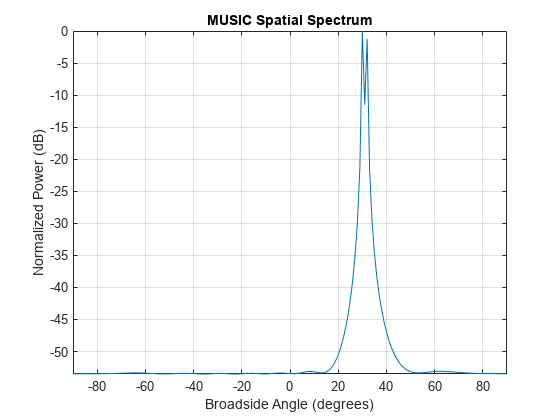step
System object: phased.MUSICEstimator
Namespace: phased
Estimate direction of arrival using MUSIC
Syntax
spectrum = step(estimator,X)
[spectrum,doa]
= step(estimator,X)
Description
Note
Instead of using the step method to perform
the operation defined by the System object™, you can call the object
with arguments, as if it were a function. For example, y
= step(obj,x) and y = obj(x) perform
equivalent operations.
spectrum = step(estimator,X)X.
[
also returns the signal broadside directions of arrival, spectrum,doa]
= step(estimator,X)doa. To use
this syntax, set the DOAOutputPort property to
true.
Note
The object performs an initialization the first time the object is executed. This
initialization locks nontunable properties
and input specifications, such as dimensions, complexity, and data type of the input data.
If you change a nontunable property or an input specification, the System object issues an error. To change nontunable properties or inputs, you must first
call the release method to unlock the object.
Input Arguments
Output Arguments
Examples
Version History
Introduced in R2016b

